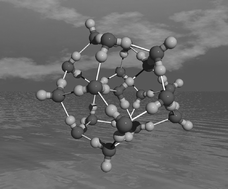A theoretical study of water clusters: the relation between hydrogen-bond topology and interaction energy from quantum-chemical computations for clusters with up to 22 molecules†
Abstract
Quantum-chemical calculations of a variety of water clusters with eight, ten and twelve molecules were performed, as well as for selected clusters with up to 22


 Please wait while we load your content...
Please wait while we load your content...